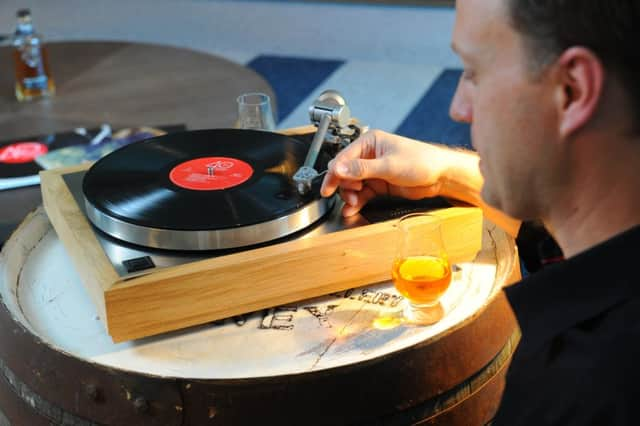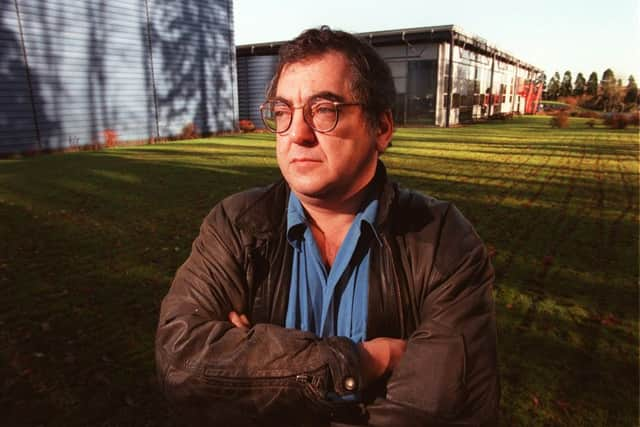Boomtime for Scots audio firms catering for the hi-end


Designers and manufacturers of quality stereo systems and earphones are continuing to expand their range of products to tempt customers in emerging markets such as China and Africa.
They range from a Glasgow company which designs £189.95 headphones and a Kilmarnock firm that produces speaker cables that could set you back £1,795.
Advertisement
Hide AdAdvertisement
Hide AdIt’s a nice manufacturing and design sector north of the border, but one that provides products to an affluent customer base.


Linn Products, based in Eaglesham, East Renfrewshire, has been building music systems for more than 40 years, with 75 per cent of its sales made overseas.
A pair of the company’s Akubarik Aktiv speakers, described as a “game changer” in audio quality by retailers, costs £16,550.
Linn turntables, among the most popular of its products, retail from around £1,500 to £2,700.
But why are people prepared to spend such sums?
“I think we are generally seeing a move towards quality,” said Linn spokeswoman Andrena McBain. “People are being very discerning when it comes to spending money – they’re looking for a quality product that delivers incredible performance and will last them for many years, rather than on something more disposable they’ll have to replace often.”
Linn’s profits fell to £1.1 million in the year up to June 30, down from £1.7m the previous year. The company’s managing director Gilad Tiefenbrun said sales had increased year-on-year but blamed the strong pound for the decrease - a particular problem for companies that rely on exports.
Sustained investment in new products, amounting to £2m over the last two years, ensured the firm, which employs 172 staff, was in a strong position going forward, he added.
While Linn is an established player in the high-end audio industry, rising demand ensures new faces can make a name for themselves in a global market.
Advertisement
Hide AdAdvertisement
Hide AdFounded in 2011, Glasgow-based design studio RHA has doubled in size in the last two years, and its products are now on sale in more than 40 countries.
It offers a range of custom headphones - a product once considered niche but now an expanding international market in its own right.
Apple made headlines, for example, in 2014 when it purchased Beats Audio, primarily a headphone manufacturer, for $3 billion.
“There are a number of reasons why high end audio equipment and high resolution audio are growing markets,” said RHA spokeswoman Emma Dixon.
“Within the headphone market specifically, the emergence of big name brands with highly-priced, fashion-oriented products in the past ten years has changed consumers perceptions about the price and quality of headphones.
“The boom in the mid-2000s encouraged consumers to take headphones with higher price points more seriously, and conduct more research into the performance capabilities of the products they were investing in. This of course lead to better educated consumers willing to invest larger amounts on products with higher overall quality.”
And it’s not just speakers, record decks or headphones that committed audiophiles are interested in. The cables linking the three are every bit as important.
Atlas, based in Kilmarnock, produces cables for audio and visual equipment. “We believe the difference our cables make should be obvious to pretty much anyone just by listening or looking,” its website states.
Advertisement
Hide AdAdvertisement
Hide AdManufacturers credit the explosion in digital music, and the collapse in the CD market, as one reason for the growing demand for high-end audio equipment.
As customers download individual tracks, they become aware of file sizes and general audio quality.
“The rise of download services, and more recently streaming services, with compressed music offerings started a conversation about music quality, leading to better informed consumers who were willing to make conscious choices to opt for higher quality music files and equipment with which to play them,” added Dixon.
Audio retailers have also noticed a change in the market.
Jonathan Turner, managing director of Aberdeen-based Holburn HiFi, opened his first shop in 1973 and has witnessed changing tastes first hand.
“When we started, a car was the number one thing people wanted to buy and a hi-fi system was number two,” he said. “Now, that’s been replaced my tablets and laptops in the mass market. Hi-fis are much lower down the list. But, the quality of the products has greatly increased in that time.
“The market is polarised - there’s the entry level, and there’s the top end.”
Jonathan insists that you can hear the difference in quality - but you have to be prepared to spend the money.
“It’s like Formula 1 - a team may spend double the money than its rivals, and be only one second faster, but that second could be the difference between finishing first or second,” he said.
“Generally, if you double the money you spend you will notice a real difference in quality. And that goes right down to spending £100 on headphones rather than £50.”